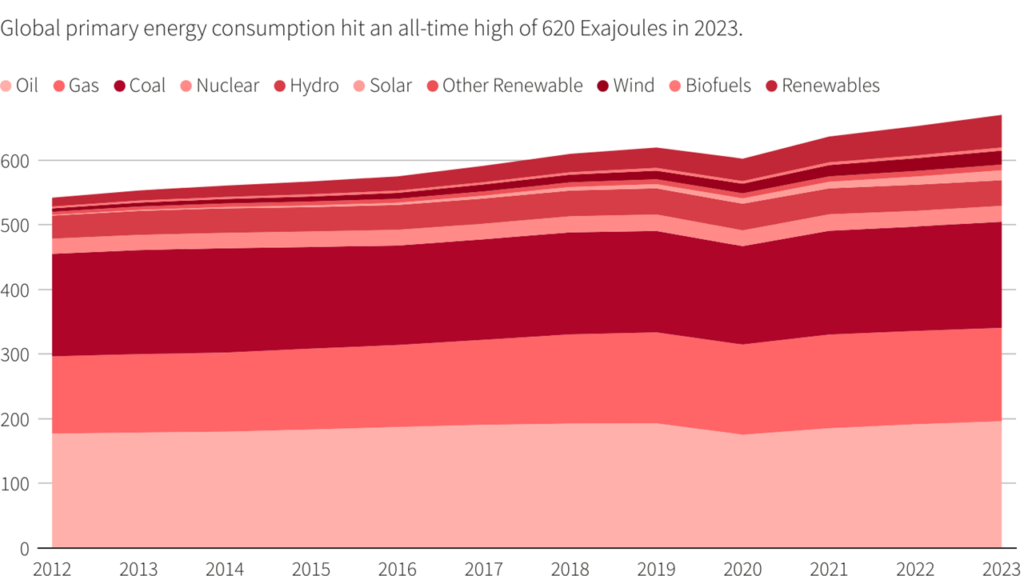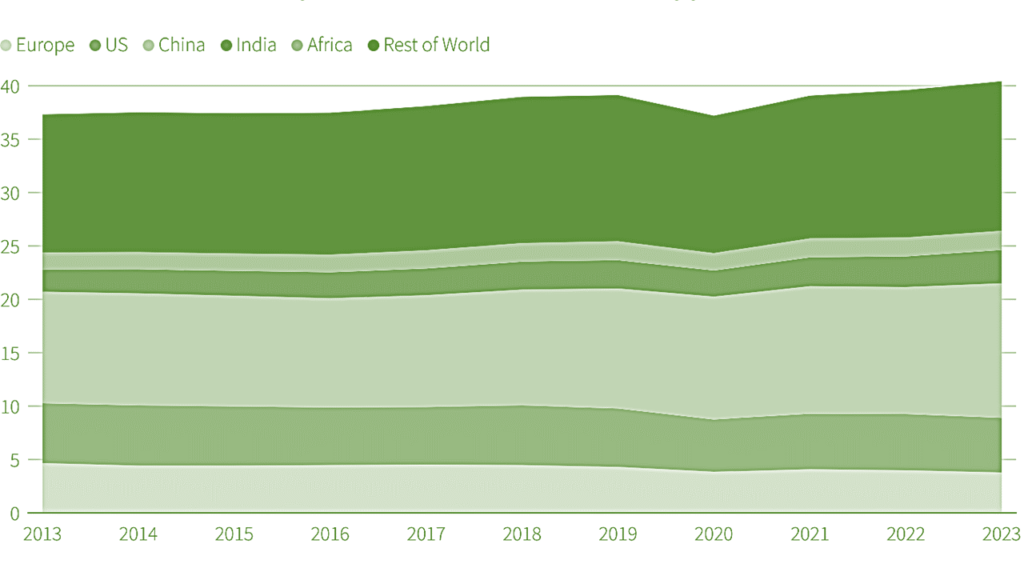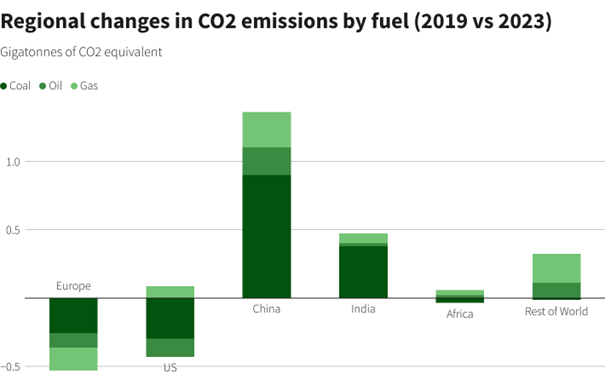In 2023, global fossil fuel consumption and energy emissions reached all-time highs, despite a slight decrease in fossil fuels’ share of the global energy mix.
This data, revealed in the industry’s Statistical Review of World Energy report, raises concerns about the transition to lower-carbon energy as global temperatures approach the critical 1.5°C threshold.
Challenges for the Energy Transition
The growing demand for fossil fuels, even with the scaling up of renewable energy sources, poses a significant obstacle to achieving a sustainable energy future. Romain Debarre of Kearney consultancy emphasized the importance of this report in helping governments and world leaders understand the challenges ahead.


Shifting Global Energy Landscape
2023 marked the first full year of redirected Russian energy flows away from the West due to the conflict in Ukraine and the first without major COVID-19 pandemic restrictions. Global primary energy consumption soared to an unprecedented 620 Exajoules (EJ), with emissions surpassing 40 gigatonnes of CO2 for the first time.
Regional Trends and Global Disparities
The report highlights varying trends in fossil fuel use across regions. Notably, Europe’s fossil fuel share of energy dropped below 70% for the first time since the industrial revolution. However, in advanced economies, signs of peaking fossil fuel demand contrast with the Global South, where economic development and improved living standards continue to drive fossil fuel growth.

Key Findings from the Report
- Consumption: Global primary energy demand increased by 2% to 620 EJ, with fossil fuels accounting for 81.5% of the mix.
- Oil: Oil consumption exceeded 100 million barrels per day for the first time, driven by non-OPEC+ producers, particularly the U.S.
- Natural Gas: Global gas production and consumption remained stable, but LNG supply rose, and the U.S. became the leading LNG supplier.
- Coal: Coal consumption reached a new high of 164 EJ, driven by China and India.
- Renewables: Renewable generation hit a record high, with China leading in capacity additions.
- Emissions: Emissions grew by 2%, surpassing 40 gigatonnes despite a slight decrease in fossil fuels’ energy share.
China’s Role in Renewable Growth and Fossil Fuel Use
While China accounted for over half of global additions in renewable energy generation in 2023, it also saw a 6% increase in fossil fuel use, reaching a new high. This highlights the complex dynamics of China’s energy transition.
The report underscores the urgent need to accelerate the shift towards renewable energy sources to mitigate the adverse effects of climate change. The record-breaking fossil fuel consumption and emissions in 2023 serve as a stark reminder of the challenges ahead and the importance of concerted global efforts to achieve a sustainable energy future.
Source : Reuters